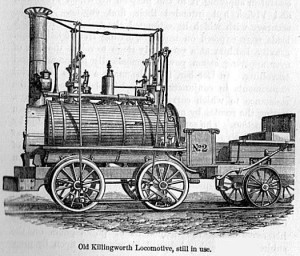The more I learn about blockchain’s possible uses — this time for supply chains — the more convinced I am that it is absolutely essential to full development of the IoT’s potential.
I recently raved about blockchain’s potential to perhaps solve the IoT’s growing security and privacy challenges. Since then, I’ve discovered that it can also further streamline and optimize the supply chain, another step toward the precision that I think is such a hallmark of the IoT.
As I’ve written before, the ability to instantly share (something we could never do before) real-time data about your assembly line’s status, inventories, etc. with your supply chain can lead to unprecdented integration of the supply chain and factory, much of it on a M2M basis without any human intervention. It seems to me that the blockchain can be the perfect mechanism to bring about this synchronization.
A brief reminder that, paradoxically, it’s because blockchain entries (blocks) are shared, and distributed (vs. centralized) that it’s secure without using a trusted intermediary such as a bank, because no one participant can change an entry after it’s posted.
Complementing the IBM video I included in my last post on the subject, here’s one that I think succinctly summarizes blockchain’s benefits:
A recent LoadDelivered article detailed a number of the benefits from building your supply chain around blockchain. They paralleling the ones I mentioned in my prior post regarding its security benefits, of using blockchain to organize your supply chain (with some great links for more details):
- “Recording the quantity and transfer of assets – like pallets, trailers, containers, etc. – as they move between supply chain nodes (Talking Logistics)
- Tracking purchase orders, change orders, receipts, shipment notifications, or other trade-related documents
- Assigning or verifying certifications or certain properties of physical products; for example determining if a food product is organic or fair trade (Provenance)
- Linking physical goods to serial numbers, bar codes, digital tags like RFID, etc.
- Sharing information about manufacturing process, assembly, delivery, and maintenance of products with suppliers and vendors.”
That kind of information, derived from real-time IoT sensor data, should be irresistible to companies compared to the relative inefficiency of today’s supply chain.
The article goes on to list a variety of benefits:
- “Enhanced Transparency. Documenting a product’s journey across the supply chain reveals its true origin and touchpoints, which increases trust and helps eliminate the bias found in today’s opaque supply chains. Manufacturers can also reduce recalls by sharing logs with OEMs and regulators (Talking Logistics).
- Greater Scalability. Virtually any number of participants, accessing from any number of touchpoints, is possible (Forbes).
- Better Security. A shared, indelible ledger with codified rules could potentially eliminate the audits required by internal systems and processes (Spend Matters).
- Increased Innovation. Opportunities abound to create new, specialized uses for the technology as a result of the decentralized architecture.”
Note that it the advantages aren’t all hard numbers, but also allowing marketing innovations, similar to the way the IoT allows companies to begin marketing their products as services because of real-time data from the products in the field. In the case of applying it to the supply chain (food products, for example), manufacturers could get a marketing advantage because they could offer objective, tamper-proof documentation of the product’s organic or non-GMO origins. Who would have thought that technology whose primary goal is increasing operating efficiency could have these other, creative benefits as well?
Applying blockchain to the supply chain is getting serious attention, including a pilot program in the Port of Rotterdam, Europe’s largest. IBM, Intel, Cisco and Accenture are among the blue-chip members of Hyperledger, a new open source Linux Foundation collaboration to further develop blockchain. Again, it’s the open source, decentralized aspect of blockchain that makes it so effective.
Logistics expert Adrian Gonzalez is perhaps the most bullish on blockchain’s potential to revolutionize supply chains:
“the peer-to-peer, decentralized architecture of blockchain has the potential to trigger a new wave of innovation in how supply chain applications are developed, deployed, and used….(becoming) the new operating system for Supply Chain Operating Networks“
It’s also another reminder of the paradoxical wisdom of one of my IoT “Essential Truths,” that we must learn to ask “who else could share this information” rather than hoarding it as in the past. It is the very fact that blockchain data is shared that means it can’t be tampered with by a single actor.
What particularly intrigues me about widespread use of blockchain at the heart of companies’ operations and fueled by real-time data from IoT sensors and other devices is that it would ensure that privacy and security, which I otherwise fear would always be an afterthought, would instead be inextricably linked with achieving efficiency gains. That would make companies eager to embrace the blockchain, assuring their attention to privacy and security as part of the deal. That would be a definite win-win.
Blockchain must definitely be on your radar in 2017.
Lo and behold, right after I posted this, news that WalMart, the logistics savants, are testing blockchain for supply chain management!


